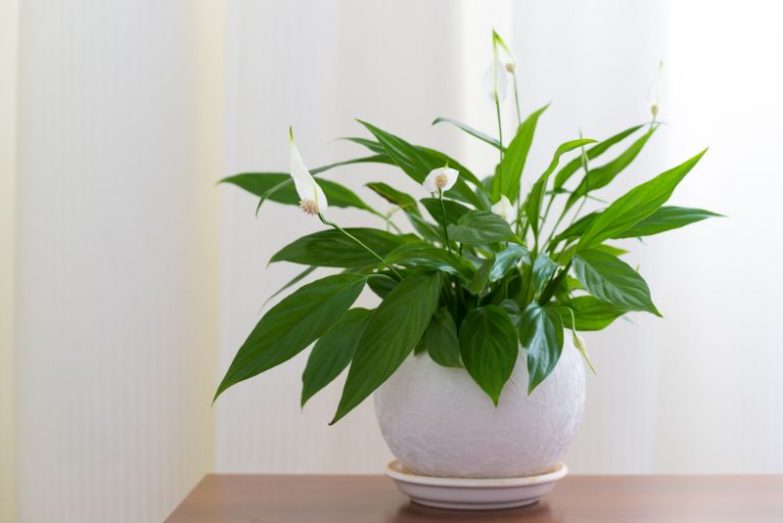There are few other houseplants that bring such calm, tropical vibes to your space as effortlessly as the Peace Lily (Spathiphyllum Spp.). Though this tropical perennial is fairly resilient, there are some common Peace Lily problems you may encounter. This article will help you identify the causes and fix them with ease.
The most common Peace Lily problems are wilting foliage, browning leaves or leaf tips, yellow leaves, failure to bloom, and pest infestation. Watering, lighting, and soil issues are the most likely causes of problems. Peace Lilies are resilient and most problems can be fixed.
Common Peace Lily Problems
Peace lilies are loved by the indoor gardening community as they’re not only beautiful but also super easy to care for. They’re extremely forgiving, and will even let you know when they need a drink – you just need to keep a lookout for the tell-tale droop.
They are also very popular office plants as they’re not too fussy about the amount of light they get and can thrive nicely despite imperfect care. However, despite their easy-going nature, you may encounter one of the following Peace Lily problems.
Wilting
The two most common causes of a Peace Lily wilting are overwatering and underwatering. It seems unusual that opposite issues can cause the same problem with your plant. This makes wilting the most dangerous problem, as the wrong treatment can be devastating for your plant.
Peace Lilies wilt quite quickly and often dramatically if they are left without water, but thankfully they usually recover without too many issues. Repeated underwatering will usually result in some brown leaf tips and edges, but otherwise, the plant will live.
Overwatering is a much more dangerous problem, as it is easy to kill a Peace Lily with too much water. Being tropical plants, Peace Lilies do enjoy moist soil – but only slightly. Prolonged soggy soil will cause root rot, and without roots, your plant will struggle to survive.
Identify The Cause
Firstly, you need to be sure which problem you are dealing with. Check the following things to see if your plant is drooping due to overwatering or underwatering.
- Soil Wetness – If the soil feels soggy or generally damp, overwatering is more likely. If the soil is totally dry, then you know it must be underwatered.
- Yellowing Foliage – Overwatering causes generalized yellowing of the leaves, most often affecting lower leaves first.
- Brown Tips And Edges – Both overwatering and underwatering can cause brown leaf tips and edges. However, this can happen with mild underwatering, but will only happen with severe overwatering.
- Root Health – Check the roots through the drainage holes, or lift the plant out of its pot to inspect the roots. Look for brown, mushy, smelly, fragile roots that indicate root rot caused by overwatering.
- Pot Size – If your Peace Lily is in a pot that is much bigger than the plant, the soil will take a long time to dry out and overwatering is much more likely.
- Pot Type And Drainage – The soil in porous pots (terracotta or wood) dries faster than non-porous pots (Plastic, glazed ceramic, metal). If your pot does not have drainage holes, overwatering is much more likely.
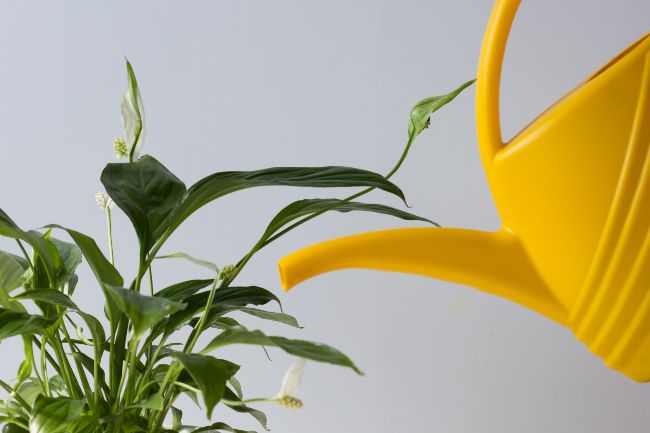
Fixing An Overwatered Peace Lily
Overwatering is one of the most serious Peace Lily problems and it needs immediate attention. This is because all that excess water actually suffocates the roots as they cannot access the required oxygen. As a result, root rot sets in, causing the plant to wilt – and in severe cases, even die.
To fix an overwatered Peace Lily, you’ll need to know how bad the problem is. Inspect the roots for signs of root rot. If there is none, then simply stop watering your plant and let the top half of the soil dry out before watering again.
Make sure your plant is positioned in bright, indirect light, with moderate temperatures and ventilation. You can follow my guide to fixing overwatered plants in this article.
If there is evidence of root rot, carefully prune the affected roots and transfer the plant to a new pot with proper drainage holes and well-draining potting mix. Read my guide to identifying, fixing, and preventing root rot for more info.
Fixing An Underwatered Peace Lily
Underwatering is one of the easiest Peace Lily problems to fix. Water your Peace Lily thoroughly, allowing water to flow out of the drainage holes.
Sometimes soil that is very dry has some trouble absorbing water quickly, so you may like to set the pot in a few inches of water and let the soil slowly soak up the water.
Your Peace Lily should start to respond within hours and the otherwise healthy leaves should be back to normal in a day or two. Leaves with brown tips or edges will not fully recover, but new foliage will be healthy.
Badly damaged leaves can be pruned off, but it would be wise to wait a few weeks until the plant can cope with the stress of pruning.
Check your plant every few days, feeling the soil, checking the weight of the pot, and water once the top half of the soil feels dry. read my guide to watering houseplants for some great tips on when and how to water your plants.
Brown Leaves
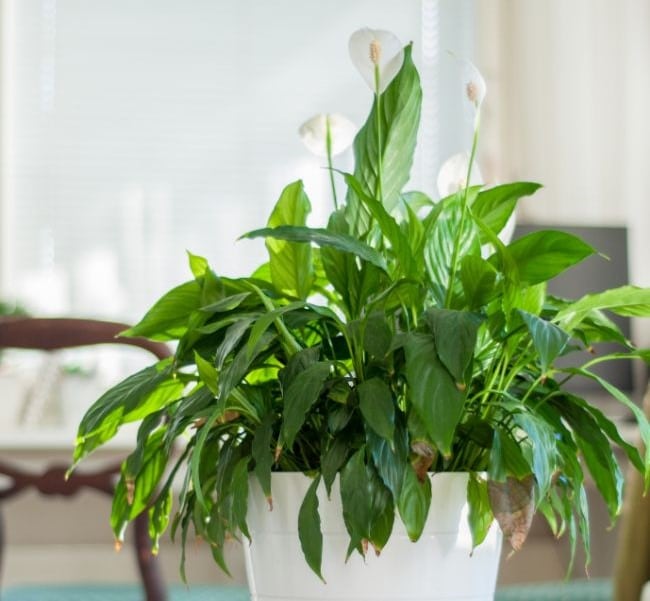
If you notice your Peace Lily’s lush foliage starting to turn brown, there are several common causes. Maybe it is receiving more direct light than it actually needs, causing the leaves to burn. Direct sunlight can often singe its tender leaves.
Or maybe you are a bit overzealous when it comes to feeding this delicate-looking beauty. Lack of proper humidity or underwatering might also cause its leaves to turn brown around the edges.
Sometimes, you might notice the leaf tips of the plant turning brown even when watered on schedule. This may be due to the presence of chemicals like fluoride or chlorine in your tap water.
How To Fix It?
Peace Lilies grow on the floor of tropical rainforests where they get a lot of dappled light. So when you think of a location to place them in your home, choose one that gets a lot of medium to bright, but indirect light. Long exposure to direct sunlight will burn the leaves.
Also, Peace Lilies absolutely love humidity. So if dry air is causing its leaf tips to turn brown, increase humidity levels and make sure it is not placed close to any air vents or heaters.
Grouping your plants, using a humidity tray, or using a humidifier are good ways to improve humidity around your plants.
As for over-fertilizing, please remember that more plants get sick due to over-fertilizing than under-fertilizing. The best way to restore the health of an over-fertilized Peace Lily is to flush the soil with clean water to wash away as much fertilizer as possible.
Peace Lilies should be fertilized with a balanced fertilizer at one-half or one-quarter of the recommended strength on a monthly basis – but only during spring and summer season. If you’d like to learn more about fertilizing houseplants, you can read this article to get up to speed.
Lastly, water quality can sometimes cause Peace Lily problems including brown tips. Chlorine and fluoride in the water are the most common culprits.
Filtering, or leaving the watering in sunlight for 24 hours can remove most chlorine, but won’t remove fluoride. read my guide to water quality for houseplants to see if you’d be better switching to rainwater or distilled water for your plants.
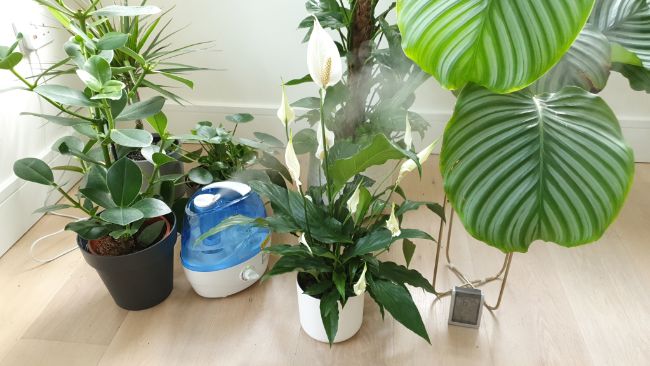
Yellow Leaves
The most common reason for your Peace Lily’s striking green leaves to turn yellow is overwatering. Sometimes, factors like a sudden change in temperature or location might also stress the plant, causing its leaves to turn yellow.
Peace Lilies hate the cold, so when exposed to cold drafts or temperatures under 40°F (4°C), you might witness some leaf curling or yellowing.
How To Fix It?
If you’re overwatering your plant, stop immediately and follow the advice earlier in this article.
Your Peace Lily will flourish in temperatures of 65-80°F (18-27°C), which is what makes it such a great indoor plant. Take care not to place it in an area that is too cold or too hot.
Also, it is advisable to move it away from non-insulated windows or doors during the winter months to protect it from cold drafts. Never place it in front of air conditioner vents or heaters.
Pest Issues
When compared to most other houseplants, pests do not cause too many Peace Lily problems. Having said that, a weakened or stressed Peace Lily can get pests like spider mites, aphids, or mealybugs. Sometimes, these pests can also be brought in by a new houseplant.
How To Fix It?
A good way to ensure your Peace Lily stays free of all of the above-mentioned pests is to adopt a habit of regularly wiping its large leaves and inspecting it for any bugs.
Some mild infestations can be managed by regularly spraying your plant with water to get the insects to fall off. If they still pose a problem, there are many other treatment options. I cover how to identify, treat, and prevent common houseplants pests in this article.
It is important to give proper care to the plant that has been affected by pests. Peace Lilies are very resilient plants and usually bounce back quickly.
If you suspect that the pests were brought in by some new houseplant, immediately isolate the affected plant.
Also, remember an unspoken rule in indoor gardening is to always quarantine new houseplants so that they do not pass on any pests or diseases that they might come with to your other healthy plants.
Plant Not Blooming
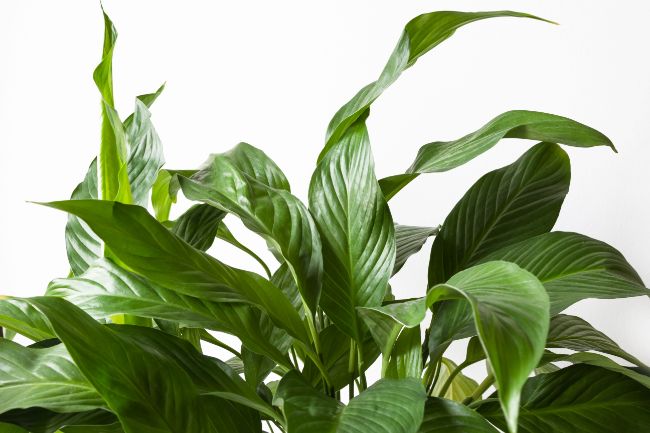
Peace Lilies rarely bloom in low-light conditions. I know that this plant is also referred to as the ‘closet plant’ because it is very tolerant of low-light conditions and could probably survive in a closet.
However, the truth is that their blooms will become more and more sparse in low light, and then it will simply stop blooming.
As long as the other care requirements are being met, the foliage will be relatively unaffected by lower light, but there is not sufficient energy to allow the plant to bloom.
Very occasionally, underfertilizing can also be the cause of your Peace Lily not blooming. However, this will only happen to a plant that has not been fertilized or repotted for many years.
How To Fix It?
To get these plants to bloom, you must give them medium to bright indirect sunlight. This level of lighting is often more than you think, so check out my article on lighting for houseplants to make sure you are giving your Peace Lily what it needs.
And if you haven’t fertilized your Peace Lily in a long, long time, one application of fertilizer is often enough to make the plant wake up and begin the process of producing those characteristic spathes.
Last Word
I’ve tried to cover lots of different Peace Lily problems in one article, covering the most common causes of each issue. The information here isn’t exhaustive, but should hopefully help most people. I’ve written some other articles about Peace Lilies which you may also find helpful.

